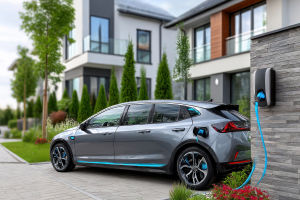Have you ever wondered if solar-powered cars could replace traditional vehicles someday?
With the global push for cleaner energy and sustainable living, solar cars seem like a promising technology. But are they truly ready to take over our roads? Let's dive into the potential, challenges, and reality of solar-powered cars.
Understanding Solar-Powered Cars
Solar-powered cars use photovoltaic panels to convert sunlight directly into electricity, which powers the vehicle's motor. Unlike conventional cars relying on gasoline or fully electric cars that depend on grid-charged batteries, solar cars generate energy from the sun itself, promising a renewable and emission-free driving experience.
Advantages of Solar-Powered Vehicles
One major advantage is the potential for zero-emission travel. Since solar energy is clean and abundant, solar cars can significantly reduce reliance on fossil fuels and lower greenhouse gas emissions. They also offer a degree of energy independence — no need for charging stations or gas pumps in sunny areas, which could be particularly beneficial in remote locations.
Current Developments and Innovations
Several car manufacturers and research institutions have developed prototypes and limited models of solar-powered cars. Advances in solar panel efficiency and lightweight materials have improved the feasibility of integrating solar cells on vehicle surfaces. For example, some models feature solar roofs or hoods that supplement battery power, extending driving range and reducing electricity consumption.
Technological Challenges to Overcome
Despite the promise, solar cars face significant hurdles. The energy density of solar panels is relatively low compared to the energy demand of modern vehicles. This means the surface area of the car limits how much energy can be captured. In less sunny climates or during nighttime, solar power generation drops, requiring backup energy sources.
Battery and Energy Storage Issues
Solar cars still rely on batteries to store energy, and current battery technology presents challenges including weight, cost, and charging times. Efficient energy storage is crucial for consistent performance, especially when solar input fluctuates. Innovations in battery tech and energy management systems are essential for solar cars to become mainstream.
Economic and Practical Considerations
At present, solar-powered cars tend to be expensive due to the high costs of solar panels and lightweight materials needed to optimize energy efficiency. Additionally, their range and speed often lag behind traditional and electric vehicles, which may limit mass adoption. Infrastructure to support solar vehicle maintenance and repair is also underdeveloped.
Environmental Impact Beyond the Road
While solar cars offer clean driving, it's important to consider the environmental footprint of manufacturing solar panels and batteries. Mining materials like lithium and rare earth elements can impact ecosystems. However, ongoing research aims to develop more sustainable production methods and recycling programs.
Complementary Technologies Boosting Solar Cars
Solar cars might not replace electric vehicles entirely but can complement them. For instance, solar panels can be installed at charging stations to generate clean energy, reducing overall carbon emissions in the transportation ecosystem. Moreover, improvements in solar efficiency and lightweight design continue to push the boundaries of what's possible.
What Does the Future Hold?
Could you imagine driving a car powered mostly by sunlight? While solar cars may not dominate highways soon, their role in sustainable transport is growing. As technology advances, solar power could become a standard feature in many vehicles, helping reduce emissions and energy costs.


